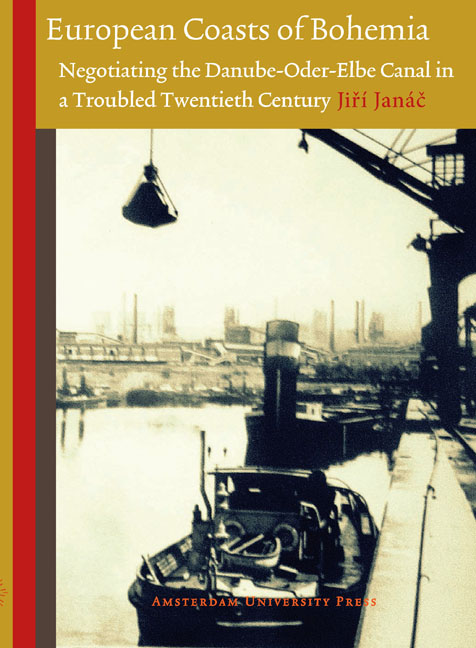4 - Linking the Soviet Volga; not the Rhine!
Published online by Cambridge University Press: 10 December 2020
Summary
“Water will stir the blood in the veins of our Industry and Czechoslovakia will become a state on a sea shore. Let's build the port in the heart of Europe. Let's build a new Czechoslovakia”
Towards the end of the war, the Protectorate and Nazi authorities both paid less and less attention to the canal project. The exception was the Wehrmacht, which requested a copy of the canal plans in March 1945, when the Red Army entered Silesia and moved along the Oder towards Moravská Ostrava. However, information included in the canal design did not help the Germans to stop the advancing Soviet troops. Ironically, the Moravian Gate, described by Baťa and others as the Czechoslovak key to (Central) Europe, served as the entrance from the east.
The canal idea re-surfaced soon after the German surrender and re-establishment of Czechoslovakia in the debates on post-war reconstruction and the new political organization of Europe. Now eighty-three years of age, Smrček met with his colleague from the days of the Paris Peace Conference, the diplomat Hugo Vavrečka, to discuss preparing the Czechoslovak strategy and demands for the upcoming Peace Conference in Potsdam. Recalling how a lack of background material had limited the Czechoslovak delegation's bargaining power back in 1919, they pushed for very detailed preparation. In September 1945, the Masaryk Academy of Labor initiated a meeting with the minister of transport, at which representatives of the inter-war technocratic movement, often closely linked to DOECS (the Danube-Oder-Elbe Canal Society) such as Smrček or Kačírek, presented their expert opinion on a wide range of transport issues. Generally, they attempted to repeat the post-World War I solutions, such as the internationalization of rivers, or delimitation of borders in a way that secured the viability of border states. This time, the main issue was the construction of dams and the production of electricity.
Moravian business circles led the efforts to pursue construction. Vitkovice's director, František Kačírek, helped to revive DOECS and its journal (the first postwar issue was published on October 12, 1945). DOECS activities culminated in the spring of 1946, when a Memorandum on the Danube-Oder Canal (Memorandum o dunajsko oderském průplavu) was presented to the state authorities, together with a proposal for the international funding of the DOE.
- Type
- Chapter
- Information
- European Coasts of BohemiaNegotiating the Danube-Oder-Elbe Canal in a Troubled Twentieth Century, pp. 131 - 180Publisher: Amsterdam University PressPrint publication year: 2013



